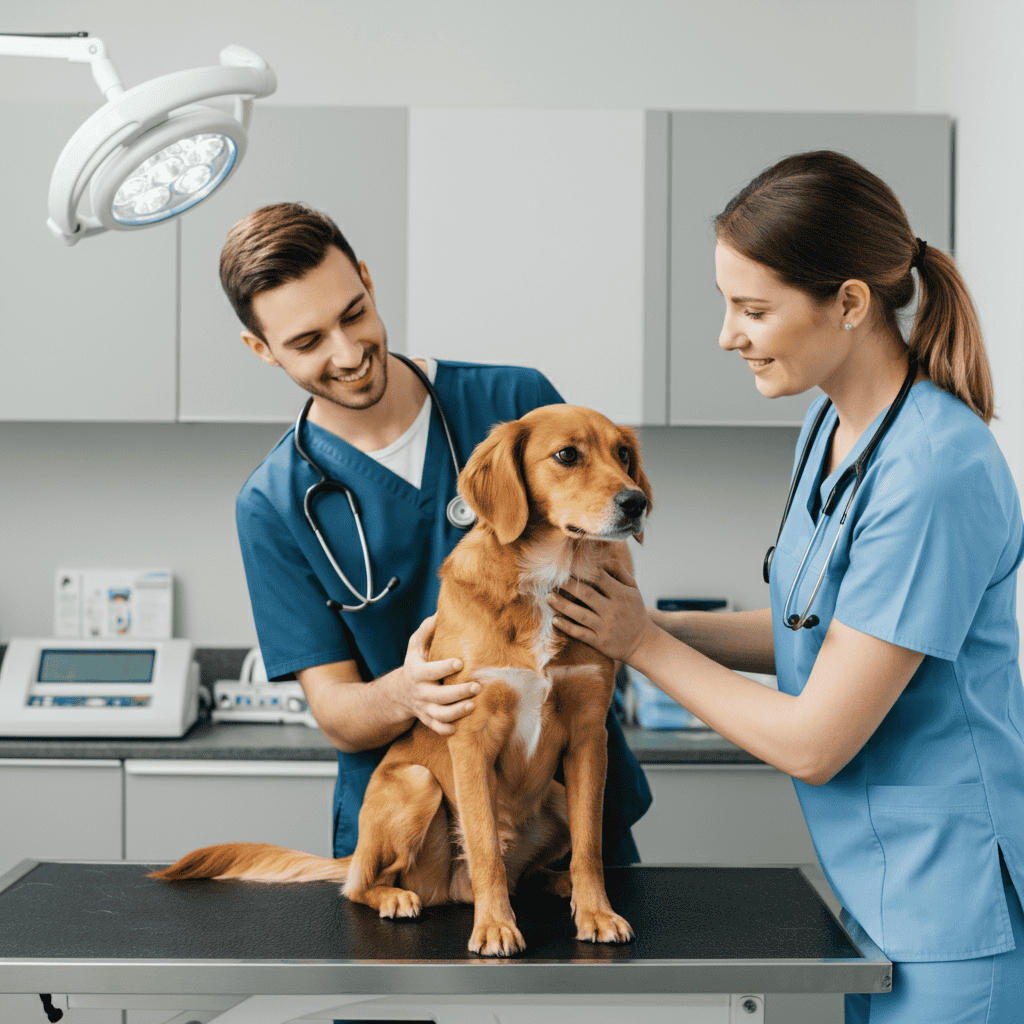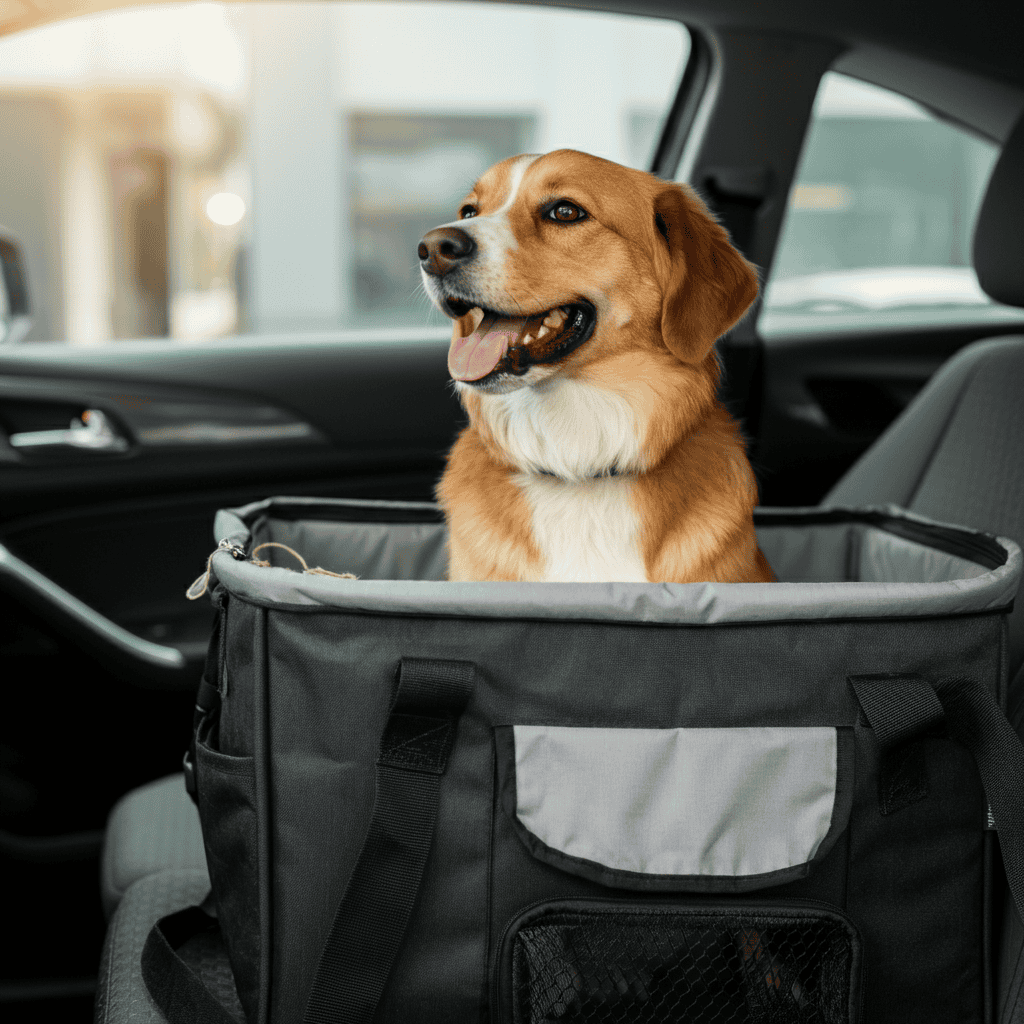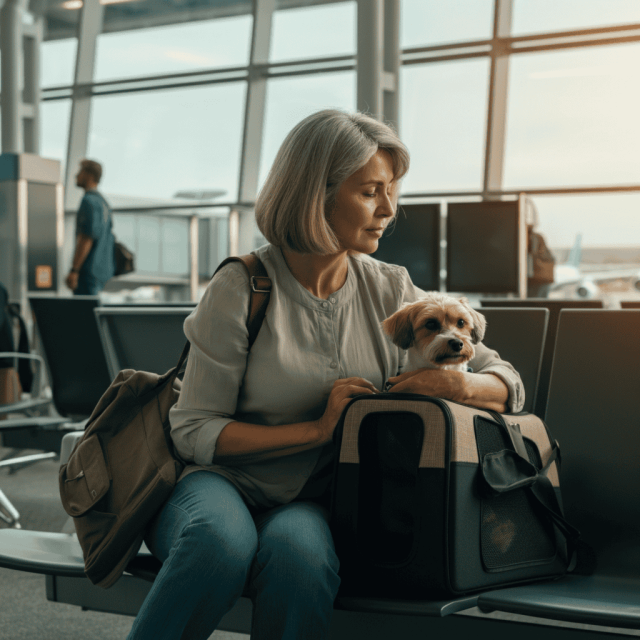Flying with your furry friend doesn’t have to be a stressful experience filled with uncertainty and worry. Whether you’re moving across the country, taking your dog on vacation, or navigating an emergency situation that requires air travel, understanding airline policies and proper preparation can make all the difference between a smooth journey and a travel disaster.
Air travel with dogs involves navigating complex airline regulations, health requirements, and safety considerations that vary significantly depending on your dog’s size, breed, and destination. From tiny Chihuahuas that can accompany you in the cabin to large German Shepherds requiring cargo transport, each situation demands specific planning and documentation.
The key to successful pet air travel lies in thorough preparation. This means understanding airline policies months before your departure, obtaining proper health certificates, selecting appropriate carriers, and preparing your dog for the unique stresses of air travel. Dogs experience the world differently from humans, and what might seem like minor inconveniences to us can become major stressors for our four-legged companions.
This comprehensive guide walks you through every aspect of air travel with a dog, from initial planning stages through post-flight recovery. You’ll learn how to navigate airline policies, prepare essential documentation, choose the right travel equipment, and help your dog handle the experience with minimal stress. Whether this is your first time flying with a pet or you’re looking to improve previous experiences, these insights will help ensure safe, comfortable travel for both you and your beloved companion.
Understanding Airline Pet Policies and Travel Options
Size Classifications That Determine Travel Method
Airlines categorize dogs into two primary groups for travel purposes: small dogs eligible for cabin travel and larger dogs requiring cargo transport. This distinction typically depends on the combined weight of your dog and their carrier, with most airlines setting limits between 15-20 pounds total for cabin travel.
Small dogs traveling in-cabin remain with you throughout the flight, stored under the seat in an airline-approved carrier. This option provides continuous monitoring and comfort, allowing you to reassure your pet during takeoff, turbulence, and landing. However, space remains extremely limited, and carriers must meet specific dimensional requirements that vary by airline and aircraft type.
Large dogs travel in cargo holds within pressurized, temperature-controlled compartments specifically designed for live animal transport. While this separation from owners causes understandable concern, cargo areas maintain similar environmental conditions to passenger cabins regarding temperature and pressure. Airlines employ specially trained ground crews to handle pets and follow strict protocols designed to ensure animal safety throughout the journey.
Breed Restrictions and Safety Protocols
Many airlines maintain comprehensive breed restriction lists, particularly targeting brachycephalic (flat-faced) breeds such as Bulldogs, Pugs, Boston Terriers, and Shih Tzus. These breeds face elevated risks of breathing difficulties at altitude due to their compressed airways, prompting some airlines to refuse transport entirely rather than risk medical emergencies.
Seasonal restrictions frequently affect cargo transport services, with most airlines suspending pet cargo operations during extreme weather periods. Summer heat creates dangerous tarmac conditions where temperatures inside cargo holds can become lethal, while winter cold poses hypothermia risks during ground delays. These restrictions typically run from May through September for heat and December through February for cold.
Age restrictions protect vulnerable puppies and senior dogs from travel-related stress. Most airlines require puppies to reach 8-12 weeks of age with completed vaccination series before travel approval. Senior dogs may need additional veterinary clearance confirming their fitness for the physical and emotional stress of air travel.
Essential Documentation and Health Requirements

Health Certificates and Veterinary Examinations
A Certificate of Veterinary Inspection (CVI), commonly called a health certificate, represents mandatory documentation for virtually all pet air travel. This document must be issued by a USDA-accredited veterinarian within 10 days of travel for domestic flights, though some states extend this window to 30 days.
The health certificate confirms your dog appears healthy enough for air travel and shows no signs of contagious diseases that could spread to other animals or humans. Your veterinarian conducts a thorough physical examination, verifies current vaccination status, and assesses your pet’s overall fitness for handling flight-related stress. Schedule this examination as close to travel dates as possible while meeting timing requirements.
International travel demands additional documentation complexity, including international health certificates that require USDA endorsement. This multi-step process involves veterinary examination, USDA office review and endorsement, and sometimes destination country embassy authentication. The entire process can consume several weeks and involves multiple fees, making early planning absolutely essential.
Vaccination Requirements and Preventive Care
Current vaccination records serve as fundamental requirements for air travel with a dog, with rabies vaccination being universally mandated for dogs over 12 weeks old traveling anywhere within or outside the United States. Core vaccinations including DHPP (distemper, hepatitis, parvovirus, parainfluenza) should remain current according to standard veterinary protocols.
Destination-specific requirements may demand additional vaccinations or treatments not routinely administered in the United States. These might include specialized tick and flea treatments, heartworm prevention protocols, or vaccines protecting against diseases endemic to specific regions. Research destination requirements thoroughly and early, as some treatments require waiting periods before travel approval.
Organize vaccination records in both digital and physical formats for easy access throughout your journey. Airlines, customs officials, and quarantine authorities may request these documents at various checkpoints, and readily available copies prevent delays that could separate you from your pet or result in refused entry to your destination.
Choosing the Right Carrier and Essential Travel Gear
Cabin Carrier Selection for Small Dogs
In-cabin carriers must meet precise dimensional requirements that vary between airlines and aircraft types. Most airlines require carriers to fit completely under the seat in front of you, typically measuring approximately 18″ x 11″ x 11″, though exact specifications differ significantly between carriers and may change based on aircraft configuration.
Hard-sided versus soft-sided carriers each offer distinct advantages for cabin travel. Hard-sided carriers provide superior protection against impacts and pressure from other luggage but offer less flexibility when fitting under seats with limited clearance. Soft-sided carriers compress slightly for a better fit but may not protect as effectively against rough handling or pressure from overhead luggage shifting during turbulence.
Ventilation requirements remain critical regardless of carrier construction type. Select carriers featuring mesh panels on multiple sides to ensure adequate airflow throughout the journey. Your dog should theoretically be able to stand, turn around, and lie down comfortably inside the carrier, though space constraints often make this challenging for cabin travel situations.
Cargo Crate Specifications and Safety Features
Cargo transport requires IATA-approved hard-sided crates meeting strict international construction and safety standards. These crates must provide sufficient space for your dog to stand at full height, turn around completely, sit upright, and lie down in natural positions. Measure your dog carefully, following airline sizing charts to ensure proper fit without excess space that could allow injury during turbulence.
Crate construction specifications include secure latching mechanisms resistant to accidental opening, adequate ventilation comprising at least 16% of total wall surface area, and leak-proof bottoms preventing spills from affecting aircraft systems. Metal hardware must resist corrosion, and all joints should be welded or securely fastened to prevent separation under stress.
Proper labeling includes “Live Animal” stickers, directional arrows indicating upright orientation, complete owner contact information, and detailed destination information. Attach a recent photograph of your dog, feeding and watering instructions, and emergency contact details. Some airlines provide specific labeling requirements that must be followed precisely to prevent transport delays.
Preparing Your Dog for the Air Travel Experience

Acclimation Training and Behavioral Preparation
Begin carrier familiarization several weeks before travel by establishing the carrier as a positive, comfortable space within your home environment. Feed regular meals inside the carrier, place favorite toys or comfort items inside, and reward calm, relaxed behavior with treats and praise. This gradual acclimation process reduces travel anxiety by making the carrier feel familiar and safe rather than confined and frightened. Proper acclimation is one of the most effective steps in ensuring stress-free air travel with a dog, particularly for first-time flyers or anxious pets.
Practice short automobile trips with your dog secured in their travel carrier to simulate motion, confinement, and environmental changes they’ll experience during air travel. Start with brief 15-minute drives around familiar neighborhoods and gradually increase duration as comfort levels improve. This preparation helps identify potential motion sickness issues and allows behavioral adjustments before flight day pressures.
Maintain normal exercise routines in the weeks leading up to travel while avoiding new strenuous activities that might cause injuries requiring veterinary attention. An appropriately tired dog often handles travel stress better than an anxious, energetic animal, so plan suitable exercise sessions before departure while ensuring adequate rest periods.
Pre-Flight Health and Comfort Optimization
Schedule a comprehensive pre-travel veterinary consultation even when health certificates don’t specifically require additional examinations. Discuss anxiety management strategies, motion sickness prevention options, and address any specific concerns about your dog’s ability to handle flight-related stress. Some dogs benefit significantly from natural calming supplements or prescription anti-anxiety medications.
Adjust feeding schedules strategically to minimize motion sickness risks while reducing bathroom needs during extended travel periods. Most veterinarians recommend offering a light meal 4-6 hours before departure and limiting water access 2-3 hours before travel begins. However, ensure adequate hydration maintenance, particularly during long travel days with multiple connections.
Pack familiar comfort items that provide emotional support in unfamiliar environments. Include favorite blankets, toys, or clothing items carrying your scent, which offer reassuring familiarity during stressful periods. These comfort objects can significantly reduce anxiety levels and help maintain calmer behavior throughout the journey.
Navigating Airport Security and Check-in Procedures
Documentation Review and Airline Check-in
Arrive at airports significantly earlier than standard passenger recommendations when traveling with pets. Airlines require additional time for thorough documentation review, carrier inspection, and specialized handling procedures that can’t be rushed without risking safety or regulatory compliance. Plan arrival times 2-3 hours early for domestic flights and 3-4 hours for international travel.
Airline personnel will meticulously inspect health certificates, vaccination records, and travel documents to ensure complete regulatory compliance. Organize all required documents for easy access and maintain backup copies stored separately in case original documents are lost or damaged. Some airlines collect pet transport fees during check-in rather than at booking, so prepare for additional costs that may not have been processed previously.
Weather monitoring at departure points, destinations, and connection cities directly affects pet transport decisions throughout your travel day. Airlines maintain the authority to refuse pet transport when temperatures exceed safety parameters at any location along your journey route. Monitor weather forecasts continuously and prepare for potential delays or cancellations due to temperature restrictions beyond anyone’s control.
TSA Security Screening with Pets
Transportation Security Administration procedures for cabin-traveling pets require temporarily removing your dog from their carrier for separate screening processes. Carriers pass through X-ray machines, while you carry your dog through metal detector equipment. This process creates stress for both pets and owners, making practice with calm handling in crowded, noisy environments extremely valuable.
Secure your dog with appropriate leash and harness equipment before removing them from carriers during security procedures. Even exceptionally well-behaved dogs may panic when exposed to busy, loud airport environments filled with unfamiliar sounds, smells, and people. Consider using properly fitted harnesses rather than collars, as frightened dogs can slip out of collars more easily when stressed.
Request private screening accommodation if your dog displays extreme stress or aggressive reactions during standard security procedures. TSA agents receive training to handle pet travel situations and can often provide alternative screening methods in quieter, less chaotic environments that reduce stress for nervous animals.
International Travel Requirements and Complexities
Country-Specific Import Regulations
International destinations maintain dramatically varying pet import requirements that often exceed basic health certificate documentation. Some countries impose mandatory quarantine periods ranging from several days to multiple months, while others demand specific vaccination protocols not routinely administered within the United States.
European Union member countries generally accept properly documented pets from the United States with appropriate health certificates and current rabies vaccination, though some require additional blood titer tests or specialized treatments. Countries including Australia, New Zealand, and the United Kingdom maintain complex quarantine systems that may render pet travel impractical for short-duration trips.
Research import requirements directly through official destination country embassy websites or certified veterinary import specialists rather than relying on potentially outdated third-party travel information. Requirements change frequently based on disease outbreaks, political situations, and updated scientific understanding, making current information absolutely essential for successful entry.
USDA Endorsement and Embassy Authentication Processes
International health certificates require official USDA endorsement through designated Veterinary Services offices strategically located throughout the United States. This bureaucratic process involves mailing completed health certificates to appropriate USDA facilities with required fees and processing time that can extend several weeks during busy travel seasons.
Certain destination countries demand embassy authentication of USDA-endorsed health certificates as a final verification step. This additional requirement involves submitting properly endorsed documents to the destination country embassies or consulates within the United States for final approval stamps. Processing times vary significantly between countries and can add substantial weeks to preparation timelines.
Plan international pet travel documentation requirements at least 6-8 weeks in advance to accommodate all mandatory processing steps without rushing. Express processing services exist for some requirements but cost significantly more and may not be available for all destinations or during peak travel periods when processing backlogs develop.
Flight Day Management and Logistics
Departure Day Timeline and Preparation
Create detailed departure day schedules that account for feeding requirements, exercise needs, bathroom breaks, and realistic travel time to airport facilities. Provide final meals 4-6 hours before scheduled departure and limit water access to 2-3 hours before travel begins. Schedule bathroom breaks as close to departure as practically possible while allowing adequate check-in time.
Assemble comprehensive travel day emergency kits, including extra copies of all documentation, cleaning supplies for potential accidents, familiar comfort items, and any required medications your dog takes regularly. Include backup leash and harness equipment even for cabin travelers, as security screening requires temporary removal from carriers.
Choose comfortable clothing that won’t prominently display pet hair, drool, or other evidence of close contact with your dog during handling procedures. Pack hand sanitizer and cleaning wipes for personal hygiene after handling pets during security screening. Consider slip-on shoes that simplify navigation through security checkpoints while carrying stressed animals.
During-Flight Monitoring and Care
In-cabin travelers allow continuous monitoring of pet conditions throughout the entire flight experience. Watch carefully for distress indicators, including excessive panting, drooling, attempts to escape carriers, or unusual behavioral changes that might indicate medical problems. Offer quiet verbal reassurance without removing pets from carriers during flight operations.
Cargo travelers require complete trust in airline handling procedures since pet access remains impossible during flight operations. Inform flight attendants about pet cargo transport, as crew members can sometimes provide updates about cargo hold environmental conditions and any special handling notifications received from ground personnel.
Consider bathroom management strategies for cabin travelers on extended flights, particularly transcontinental or international routes lasting many hours. While pets cannot leave carriers during flight, extremely long journeys may require creative solutions including absorbent pads placed strategically within carriers, though space constraints make this challenging.
Post-Flight Recovery and Health Assessment
Immediate Post-Arrival Pet Evaluation
Conduct thorough physical and behavioral assessments immediately upon reuniting with your pet after any air travel experience. Look for signs of excessive stress, disorientation, unusual lethargy, or any physical injuries that might have occurred during transport procedures. Document any concerning observations with photographs and report issues to airline personnel immediately while still at airport facilities.
Provide fresh water access immediately but limit initial consumption amounts to prevent stomach upset common after stressful travel experiences. Allow a gradual return to normal water consumption over several hours rather than unlimited access that might cause digestive problems. Apply similar approaches to food offerings, providing small portions rather than full meals until normal appetite returns.
Plan quiet recovery periods after arrival, particularly for pets that experienced cargo transport separation from owners. Travel stress affects different dogs in varying ways and can influence behavior and appetite for 24-48 hours following arrival. Maintain calm environments and familiar routines as much as possible while adjusting to new locations.
Extended Health Monitoring and Care
Monitor pet behavior, appetite, and elimination patterns for several days following air travel experiences. Changes in eating habits, bathroom routines, energy levels, or social behavior may indicate travel-related stress or underlying health problems requiring veterinary evaluation. Some stress reactions appear delayed rather than immediately obvious.
Maintain regular vaccination schedules and health care routines even while traveling to unfamiliar locations. Research and identify reputable veterinary services at your destination before arrival in case emergency medical attention becomes necessary. Ensure continuous access to your dog’s complete health records and any prescription medications throughout extended trips.
Document the complete travel experience, including successful strategies and challenging situations encountered. This information proves invaluable for improving future travel planning and helps identify specific areas where preparation could be enhanced. Share experiences with other pet owners facing similar travel decisions.
Special Considerations for Different Dog Sizes
Advantages of In-Cabin Travel for Small Dogs
Small dogs eligible for cabin travel experience significantly reduced stress compared to cargo transport experiences. Remaining with owners throughout the entire journey provides continuous emotional support and allows immediate response to any signs of distress or medical concerns that might develop. Familiar owner presence helps maintain calm behavior in strange airport and aircraft environments filled with unfamiliar stimuli.
Cabin environmental conditions remain more stable than cargo holds throughout flight operations, reducing risks of temperature-related health problems that can affect pets during ground delays or extreme weather situations. Pressurization occurs simultaneously in passenger areas, eliminating pressure differential concerns that might affect pets traveling in cargo compartments.
Continuous monitoring capabilities allow immediate intervention when health problems or behavioral issues arise during travel. Signs of breathing difficulties, overheating, or extreme anxiety can be addressed quickly rather than remaining undetected in cargo areas where assistance isn’t available until landing and unloading procedures.
Managing Size and Weight Restrictions
Weight limitations for cabin travel include combined totals of dogs and carriers together, creating strategic challenges for owners of pets near maximum size allowances. Heavier carriers reduce allowable dog weight proportionally, making lightweight carrier selection essential for maximizing pet weight accommodation while maintaining required safety standards.
Strategic packing approaches help manage weight restrictions without compromising essential safety features. Remove unnecessary carrier components such as heavy wheels, oversized handles, or decorative elements that add weight without improving functionality. Focus on carriers offering minimal weight combined with maximum durability and required safety certifications.
Some airlines demonstrate flexibility with slight weight overages for cabin pets, while others maintain strict enforcement of published limitations. Contact airlines directly to understand specific policies and any accommodation possibilities they might offer for dogs slightly exceeding standard weight restrictions.
Emergency Planning and Problem-Solving Strategies
Common Travel Day Complications
Weather-related delays affect pet travel more severely than standard passenger transportation due to temperature restrictions and animal welfare protocols. Storm systems, extreme temperatures, and mechanical problems can strand pets in uncomfortable conditions for extended periods beyond normal passenger delays. Prepare for potential complications with extra supplies, flexible scheduling, and backup accommodation plans.
Documentation problems rank among the most frequent pet travel complications encountered at airports. Missing veterinary signatures, expired certificates, incorrect information, or formatting errors can prevent boarding and require expensive emergency veterinary visits for document correction. Review all paperwork multiple times before departure and maintain backup copies stored separately.
Carrier sizing conflicts often emerge during check-in procedures when carriers that appeared suitable don’t meet specific airline dimensional requirements upon measurement. Airline policies vary significantly, and aircraft configurations affect available space under seats. Measure carriers precisely against published specifications and consider backup options when traveling with borderline-sized equipment. These challenges highlight the importance of thorough preparation for air travel with a dog, where minor oversights can lead to major disruptions.
Comprehensive Contingency Planning
Develop detailed backup strategies for addressing common problems, including weather delays, documentation issues, health emergencies, and transportation disruptions. Research 24-hour veterinary services located near departure and destination airports for emergency health certificate updates or medical situations arising on travel days.
Identify pet-friendly accommodation options near airports for unexpected overnight delays caused by weather or mechanical problems. Many airport-area hotels accommodate pets but may have limited availability during widespread delays when numerous travelers simultaneously seek alternative lodging arrangements.
Investigate travel insurance policies covering pet-related complications, including veterinary emergencies during travel, additional accommodation costs for weather delays with pets, or alternative transportation expenses when pets cannot travel as originally planned. Coverage varies significantly between policies and providers.
Making Informed Decisions About Air Travel with Your Dog
Air travel with dogs requires careful evaluation of individual pet temperament, health status, and behavioral characteristics alongside practical travel necessities. Small dogs generally handle cabin travel more successfully than large dogs manage cargo transport, but individual personality factors and health considerations often matter more than size classifications alone. Additionally, if you’re exploring sustainable travel options, consider whether flying is truly necessary or if alternative ground-based transportation could provide a lower environmental impact while still accommodating your dog’s needs.
Learn more: Ultimate Trip Planning Guide: 10 Steps to Your Dream Vacation














